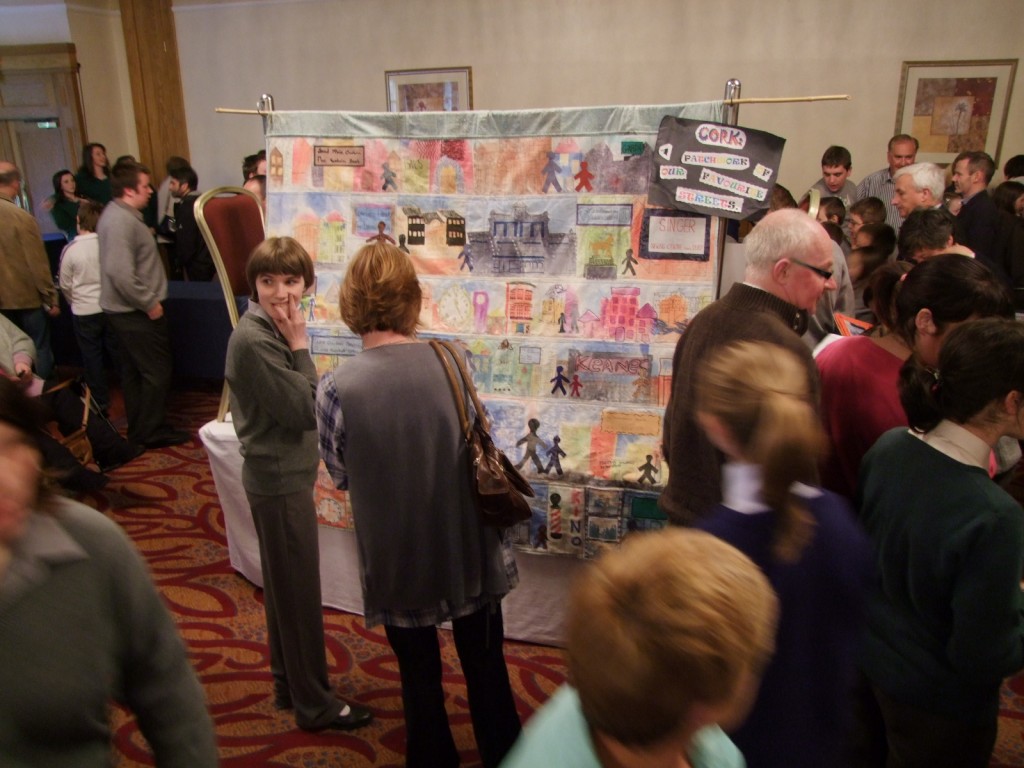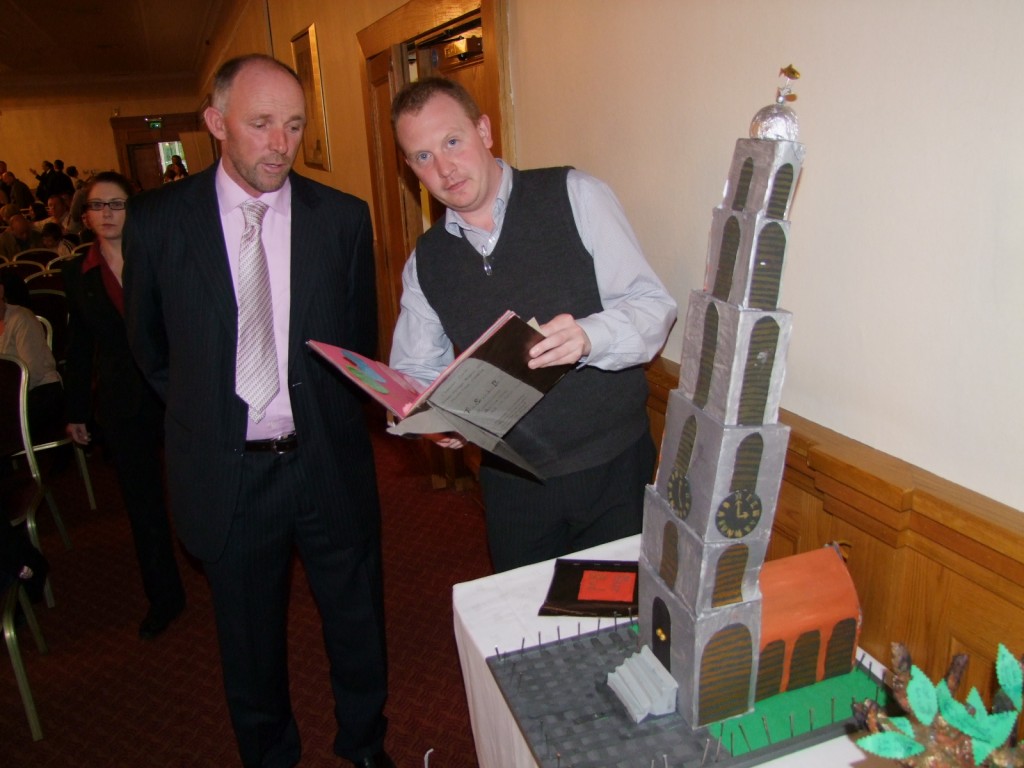
Kieran’s Our City, Our Town Article, Cork Independent
Discover your Area
Another year and another great set of projects by Cork students. This year marks the eighth year of the Discover Cork: Schools’ Heritage Project co-ordinated by myself. The Project is open to schools in Cork; at primary level to the pupils of fourth, fifth and sixth class and at post-primary from first to sixth years.
One of the key aims of the project is to allow students to explore, investigate and debate their local heritage in a constructive, active and fun way. Projects on any aspect of Cork’s rich heritage (built, natural and cultural) can be submitted to an adjudication panel. Prizes are awarded for best projects and certificates are given to each participant. A total of 28 schools in Cork City took part in the 2010 Project. Circa 900 students participated in the process. Approx 180 projects were submitted on all aspects of Cork’s heritage.
The standard was very high this year. The top prizes, 60 in all, were given to students’ projects, which took a clever approach to the topic. Much of the work could be published as local heritage / history guides. The methodologies that the students provide interesting ways to approach the study of local heritage.
Submitted projects must be colourful, creative, have personal opinion, imagination and gain publicity before submission. These elements form the basis of a student friendly narrative analysis approach where the students explore their project topic in an interactive and task oriented way. In particular students are encouraged to attain primary material generating primary material through engaging with fieldwork, interviews with local people, making models, photographing, cartoon creating, making DVDs of their area. Re-enacting is also a feature of several projects.
Students are to experiment with the overall design and plan of their projects. This year thirty per cent of the marks went towards making a short film on projects. This brought the overall project towards ideas of phenomenology and looking at topics as phenomenons within the student’s world. It brought the student to become more personal and creative in their approaches.
The submitted DVDs this year had interviews of family members to local historians to the student taking a reporter type stance on their work. Some students also chose to act out scenes from the past. In general this DVD brought up the standard of the personal response by students and also engaged other family members and friends to help out, whether that be sourcing a camera or helping with scripts and ideas or helping with editing of films on computers.
The creativity section also encourages model making. All models are referred to in the project book. The student must describe why and how they put the model together. The best model trophy in general goes to the creative and realistic model.
Students are encouraged to compare and connect the past to their present and their immediate future. Work needs to involve re-imagining what life may have been like. One of the key foundations in the Project is about developing empathy for the past and to try to link the present to the past – to think about attitudes and experience in the past. Interpretation is also empowering for the student- all the time developing a better sense of the different ways in which people engage with and express a sense of place and time.
Students’ opinions are very important to the overall aims of the project. The inclusion of opinion is about personalising your project. Any text taken from books and the internet needs to be the students’ own words (as far as possible).Personal commentary is to appear throughout the project.
Every year, the students involved in the project produce lots of project books and do enormous work getting the information from the local community. This section is about showing the student’s work to the wider community. It is about reaching out and gaining public praise for the student but also appraisal and further ideas. This year the most prominent source of gaining publicity was having parents into the classroom for an open day for viewing projects. Students were also successful in putting work on local parish newsletters, newspapers and local radio stations and also presenting work in local libraries.
Overall, the Discover Cork: Schools’ Heritage Project attempts to provide the student with a hands-on and interactive activity that is all about learning not only about your local area but also about the process of learning by participating students. The Schools’ Heritage Project also focuses on motivating and inspiring young people. The Project attempts to build a new concerned generation of Cork people, pushing them forward, growing their self-development empowering them to connect to their world.
The project in the city is kindly funded by Cork Civic Trust (viz the help of Mr. John X. Miller), Cork City Council (viz the help of Ms. Niamh Twomey), the Heritage Council and the Evening Echo. Prizes were also provided in the 2010 season by Sean Kelly of Lucky Meadows Equestrian Centre Watergrasshill, the Lifetime Lab, Lee Road (thanks to Meryvn Horgan) and Cork City Gaol Heritage Centre. A full list of winners, topics and pictures of some of the project pages can be viewed at www.corkheritage.ie
Captions:
539a. View of creative quilt depicting the streets of Cork by students of Scoil Bernadette (pictures: Kieran McCarthy)
539b. View of winning model by Julianne McGowan, Our Lady of Lourdes National School, Ballinlough with Lord Mayor of Cork, Cllr. Dara Murphy, John X. Miller of Cork Civic Trust, Niamh Twomey, Heritage Officer, Cork City Council and Cllr Kieran McCarthy, co-ordinator.

